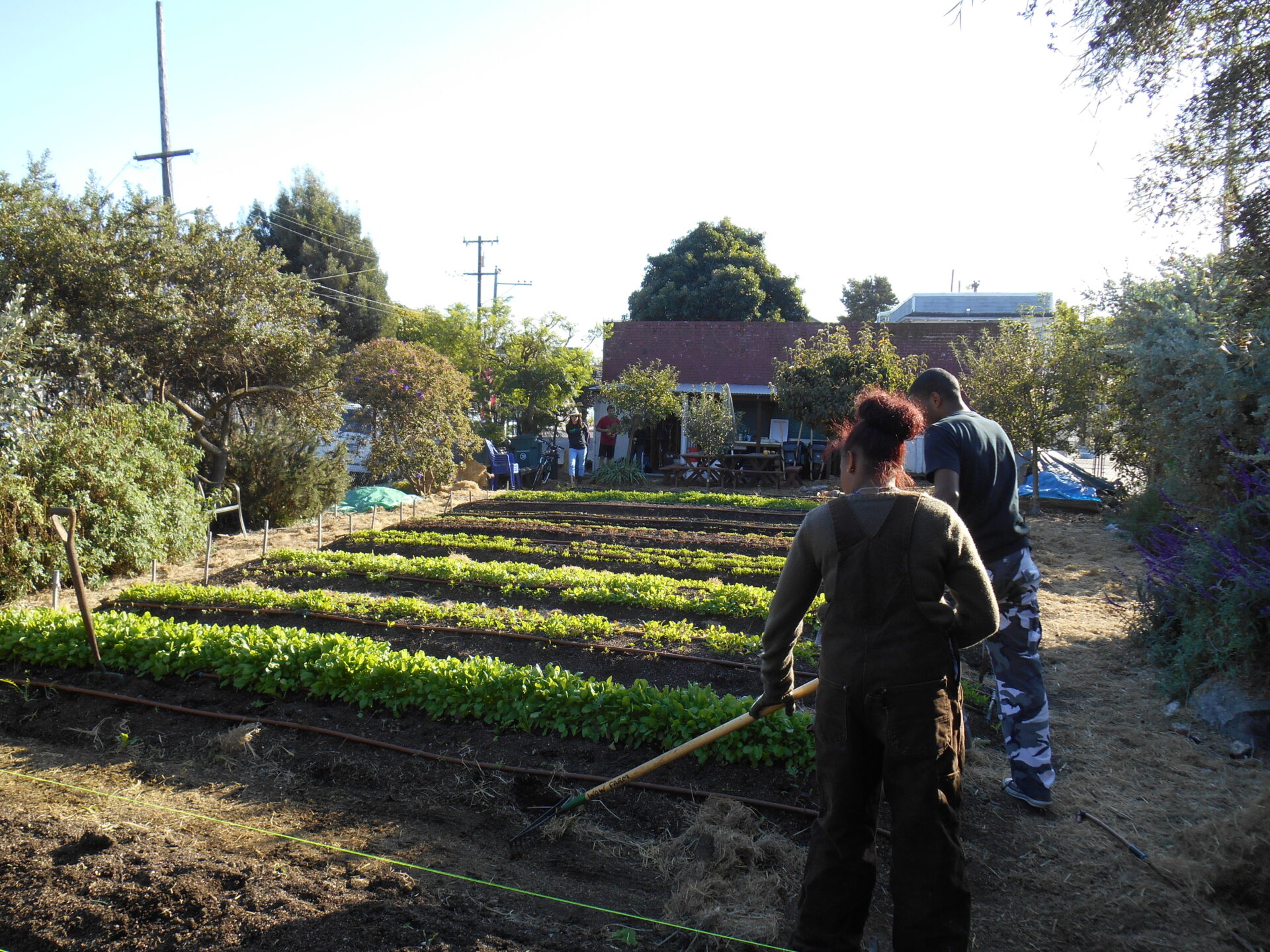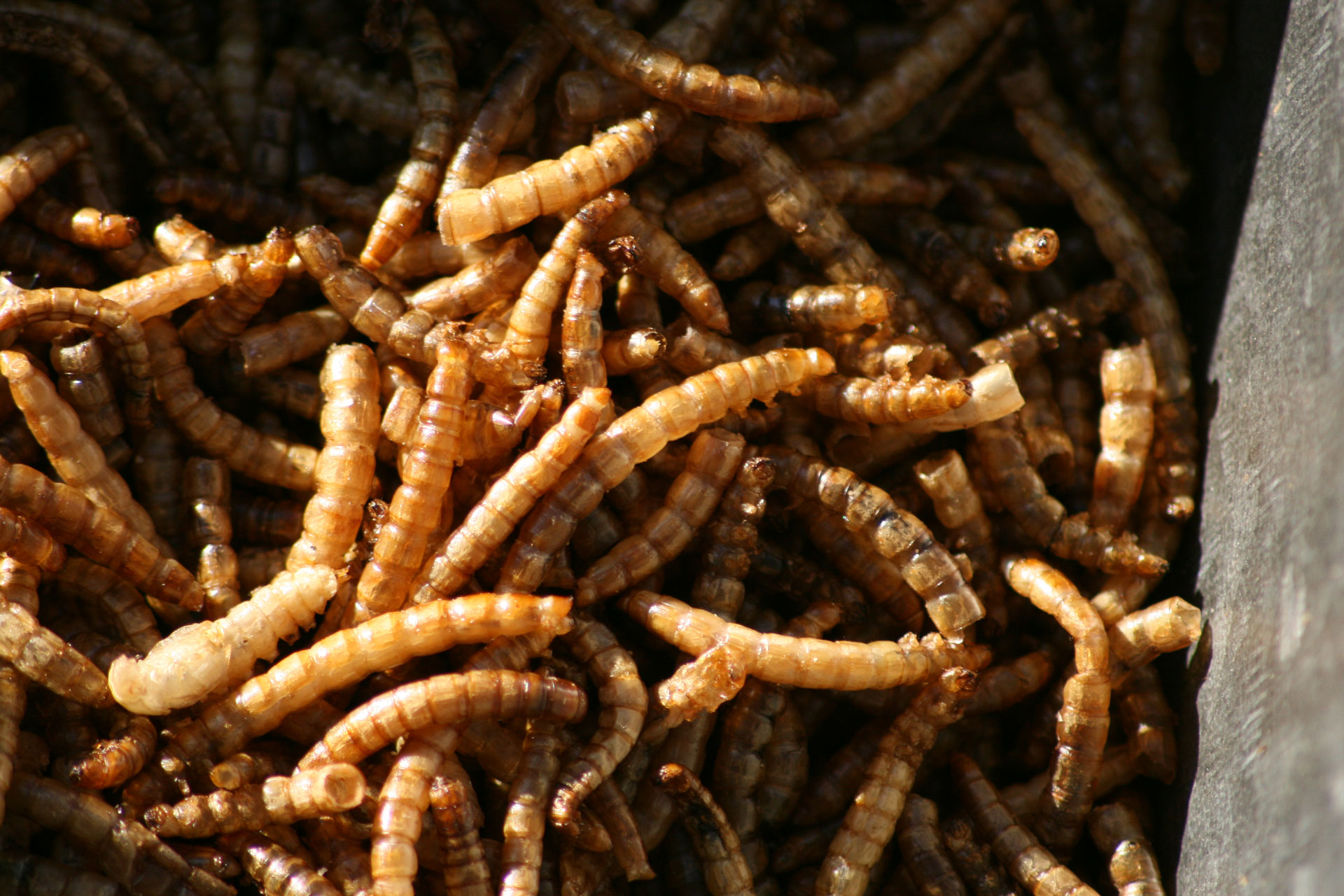
The mealworm beetle was once known only as a pest that ruined stored grains, but the lowly mealworm is currently having its moment in the positive spotlight as a high-protein sustainable food source. Not only are mealworms fed to backyard chickens, wild birds and pets, such as reptiles and captive birds, but they are also a protein source fed to commercially raised swine, poultry and farmed fish.
Humans eat farmed fish, and the parts that we don’t eat, the fish byproduct, are dried and crushed into fishmeal and fed to swine and poultry as well as back to farmed fish. Fishmeal is also used as a fertilizer to grow fruits, vegetables and nuts. So, the mealworm already plays a role in our food supply chain.
As with mealworms, fishmeal is a high-protein food source, but it may contain heavy metals or other contaminants. When organic farmers raise mealworms, they can control the insects’ feed and environment to eliminate chemicals and contaminants.
Mealworms aren’t actually a worm at all. They are the larvae of Tenebrio molitor, a species of darkling beetle. The beetle has four life stages: egg, larva, pupa and adult beetle. The larvae go through several instar, or developmental stages, before reaching a final length of 2.5 cm to 3 cm. Adults are shorter in length, about 1.25 cm to 1.8 cm. Adult beetles live for several months. The females lay around 500 eggs in their lifetime.
In the wild, mealworms eat vegetation, dead insects and their own skin casings from all those developmental molts. In captivity, mealworms eat food waste.
Mealworm Business Model
One northwest company, Beta Hatch, in collaboration with Indiana University, is taking the future of mealworms a step further with a genetic breeding program to produce bigger, better bugs. The new Beta Hatch flagship hatchery in Cashmere, Wash. is in the final stages of construction.
“It’s the largest facility for mealworm farming in North America,” said Aimee Rudolph, Beta Hatch vice president of business development. “We are currently in the process of amplifying our mealworm population and insects have begun moving into their new grow rooms. We expect to be online and at full capacity in March 2022.”

By 2023, Beta Hatch expects to start contracting with a network of insect ranchers.
“We are using a hub-and-spoke approach to production and expansion,” Rudolph said. “The facility in Cashmere is designed to operate as a hatchery. Eggs will be shipped to insect ranches. These ranches will be co-located with feedstocks for the insects, finished feed produces, end users for the frass or other key steps in the supply chain. In this way, we can further reduce the environmental impact of food production.”
Beta Hatch’s flagship hatchery is designed to support at least a dozen ranches and is already looking at ways to expand. Besides dried mealworms, Beta Hatch also sells frass. The mealworms’ frass (insect excrement) is a 2-3-2 fertilizer and soil amendment certified organic by USDA. It’s also OMRI listed.
Raising Mealworms
Mealworms are raised in a sustainable way. Besides eating agricultural waste byproducts, mealworms require minimal water and grow at 500 times the acre yield of soy, according to Beta Hatch’s website (soy produces an average of 50 bushels per acre.)
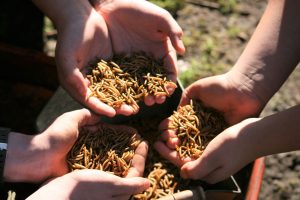
“The larval stage is when we use the mealworms for feed. It’s also the life stage which produces frass, a natural fertilizer,” Rudolph said. “We have this beautiful, circular system in which the insects eat byproducts from industries like fruit harvesting and grain processing. The entire insect is then utilized as a feed ingredient with feed production mirroring the way it works in nature.
“Insect ranching can be a steady source of revenue,” Rudolph pointed out. “You don’t have seasonality with mealworms. It’s a year-round predictable income to complement a diverse crop portfolio.”
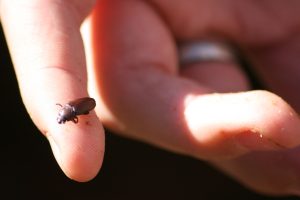
Food Revolution
Humans eat the chickens, swine and fish that have been fed mealworms, but what if we skipped the middleman and went straight to eating the grubs?
Many other cultures already eat insects. The act of humans consuming insects even has a name: entomophagy. In Brazil, queen ants take flight during October and November. The ants have a minty flavor and are often dipped in chocolate. In China, bee larvae are available as an appetizer. Chinese street vendors sell assorted insects skewered on sticks. In Denmark, ginger root and blended grasshoppers are mixed with apple juice for a special drink. In Ghana, up to 60% of the protein in rural Africans’ diet comes from insects; termites are an important survival food.
Japanese chefs whip up fancy dishes using fried silk moth pupae and fried grasshoppers. Insects in Mexico can satisfy a sweet tooth, either fried and dipped in chocolate or added to candy. Some Mexican cooks soak ant eggs in butter before serving them up. In Thailand bars, customers can snack on stir-fried crickets, grasshoppers and grubs while enjoying their favorite alcoholic beverage. In the U.S., there’s a California-based company called Hotlix, which offers insect novelty edibles, such as suckers with scorpions embedded inside and snack-size packages of fried mealworms and crickets in assorted flavors, including bacon and cheddar, Mexican spice and salt and vinegar.
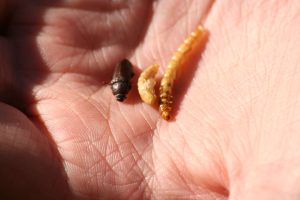
For those interested in growing a sustainable protein source in their home or office, Livin Farms based out of Austria and Hong Kong supplies desktop mealworm hives. The hive looks somethings like a plastic tote with drawers. Mealworms are raised inside the drawer compartments, fed daily and harvested weekly.
Mealworms are over 50% protein and about 25% fat and can live on food scraps, such as those the home gardener might toss into their compost bin or feed to their backyard hens. Scraps such as fruits and vegetables, and grains such as oats and bread, will keep mealworms growing and thriving in the Livin Farms mealworm hives. Worms in the hives shouldn’t be fed greasy or spicy foods, liquid foods, such as soup, or anything rotten or moldy. Dry and moist foods must be balanced to keep smells at bay.
Optimum temperature for mealworms in captivity is around 82 degrees F. They need around 60% humidity. After harvesting the worms when they are about 3 cm long, they can be humanely killed by freezing them. They are then ready to fry, bake or grind into protein powder for human consumption.
Besides being high in protein, insects have a minimal impact on the environment. The question is: Will Americans ever be able to get past the ‘ick’ factor and willingly eat insects as anything other than a novelty? Only time will tell.



